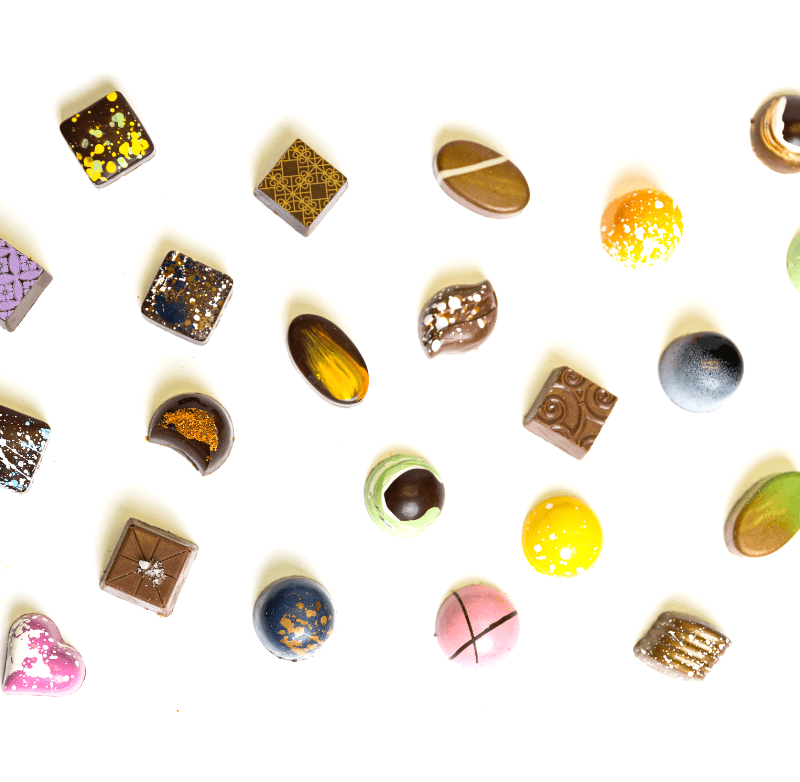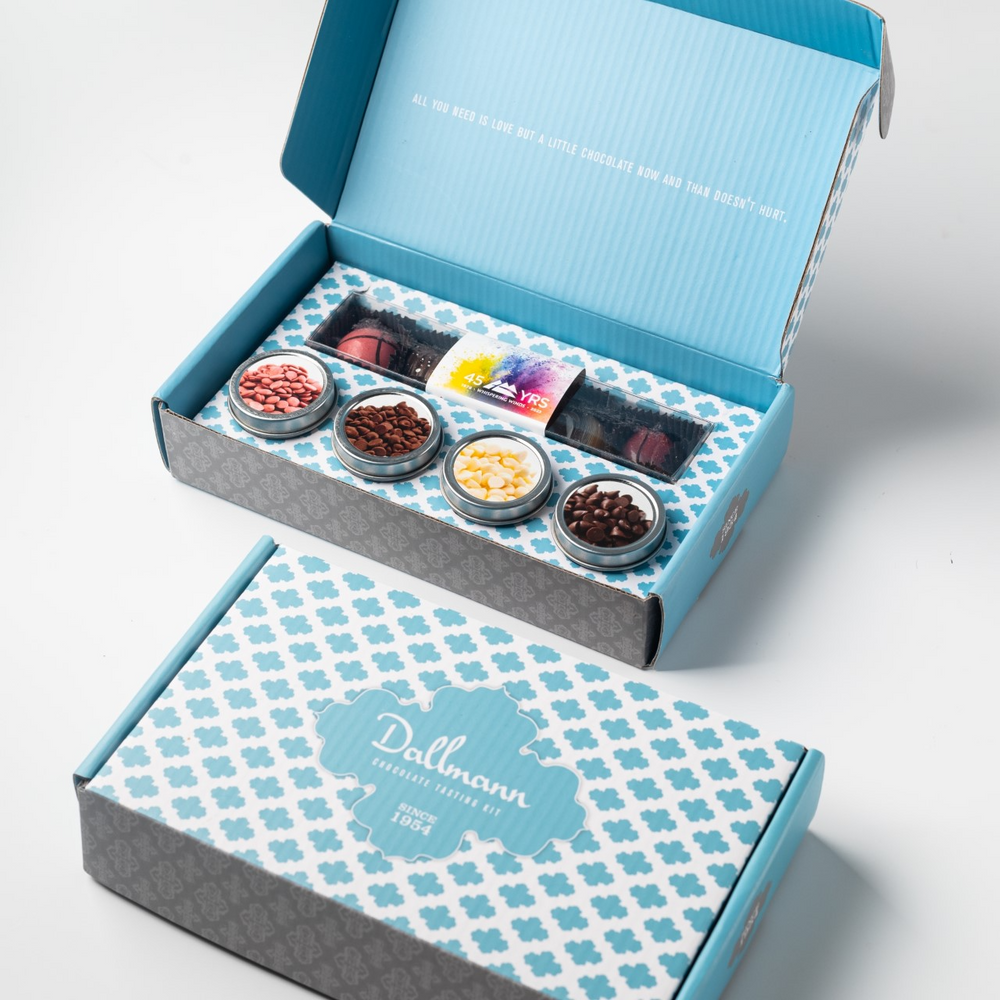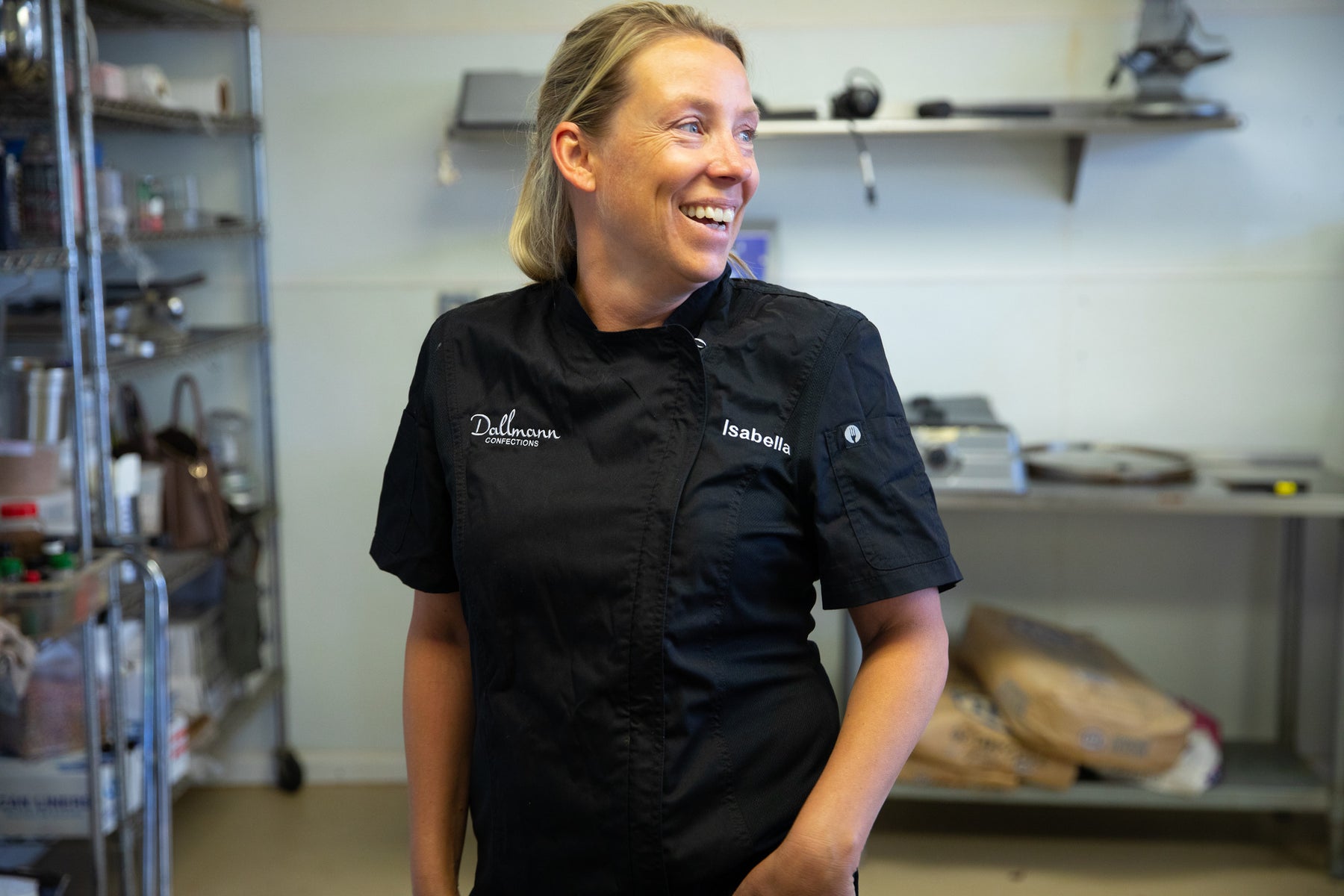Use left/right arrows to navigate the slideshow or swipe left/right if using a mobile device
How to taste chocolate like an expert?
Tasting chocolate like an expert involves savoring its aroma, observing the color and sheen, breaking it for a clean snap, and letting it melt on your tongue to appreciate the flavor notes. Focus on texture and finish for a complete experience.
Is chocolate tasting a job?
Chocolate tasting can indeed be a job, especially for professionals in the culinary and confectionery industries. These individuals evaluate and assess chocolate products for quality, flavor, and texture, contributing to product development and enhancement.
How to do a chocolate tasting?
The process of conducting a chocolate tasting involves selecting a variety of chocolates, savoring each piece while noting its aroma, texture, and flavor profile, and taking the time to appreciate the subtleties in taste and quality.
Which dark chocolate tastes the best?
The best dark chocolate varies by personal preference, but many chocolate enthusiasts praise brands like Valrhona, Amedei, and Dallmann Confections for their rich flavors and high cocoa content, delivering exceptional taste experiences.
What chocolate tastes the best?
The chocolate that tastes the best varies by personal preference, but many chocolate enthusiasts gravitate toward high-quality dark chocolate for its rich flavor and complex notes, making it a standout choice for a delightful tasting experience.
Which is the best tasting chocolate?
The best tasting chocolate varies by personal preference, but many consider high-quality dark chocolate with a rich, smooth flavor profile as the ultimate choice. Dallmann Confections’ exquisite selections aim to satisfy all chocolate lovers’ tastes.
Which chocolate taste the best?
The best-tasting chocolate varies by personal preference, but many chocolate lovers enjoy rich dark chocolate for its depth and complexity. Additionally, our curated Self-Guided Classic Tasting Chocolate Kit allows you to explore a variety of flavors to find your favorite.
What are the steps in chocolate tasting?
The steps in chocolate tasting involve observing the appearance of the chocolate, inhaling its aroma, breaking it to release flavors, tasting a small piece to evaluate taste and texture, and finally, savoring the aftertaste for a complete experience.
Can one become a professional chocolate taster?
One can become a professional chocolate taster. It requires a combination of training, experience, and a refined palate to evaluate chocolate's flavors, aromas, and textures effectively. Specialized courses and certifications can help aspiring tasters develop these essential skills.
What do experts look for in chocolate?
Experts look for several key qualities in chocolate, including aroma, texture, flavor complexity, and the balance of sweetness and bitterness. The quality of ingredients and craftsmanship also plays a crucial role in evaluating overall excellence.
How does one pair wine with chocolate?
Pairing wine with chocolate involves matching the wine's sweetness and flavor profile to the chocolate's richness. For example, dark chocolate pairs well with bold red wines, while milk chocolate complements sweeter, lighter wines like champagne or dessert wines.
What makes a dark chocolate high quality?
High-quality dark chocolate is characterized by its high cocoa content, minimal additives, and rich, complex flavor profile. The sourcing of quality cocoa beans and careful craftsmanship also contribute to its superior taste and texture.
How to organize a chocolate tasting event?
Organizing a chocolate tasting event involves selecting a variety of quality chocolates, creating a comfortable tasting space, preparing tasting notes, and guiding participants through the experience while encouraging them to savor and discuss the flavors.
What notes should one detect in chocolate?
The notes one should detect in chocolate include a range of flavors, such as fruity, nutty, spicy, and floral undertones, as well as hints of caramel, vanilla, or even earthy elements, revealing the complexity of the cocoa's origin and processing.
How does origin influence chocolate taste?
The origin of chocolate significantly influences its taste. Factors such as soil composition, climate, and regional farming practices contribute unique flavor profiles, resulting in a diverse range of taste experiences in chocolate from different sources.
What distinguishes fine chocolate from commercial brands?
Fine chocolate is distinguished from commercial brands by its high-quality ingredients, careful craftsmanship, and rich flavor profiles, often focusing on single-origin cocoa and minimal additives, creating a superior tasting experience.
How does roasting affect chocolate flavor?
Roasting significantly influences chocolate flavor. It develops complex aromas, enhances sweetness, and balances acidity, ultimately contributing to the rich, deep flavors found in high-quality chocolate. The roasting process is essential for bringing out the unique taste profiles of cacao beans.
Whats the best chocolate for gift giving?
The best chocolate for gift giving is one that offers a delightful tasting experience, such as Dallmann Confections' Self-Guided Classic Tasting Chocolate Kit, which features a curated selection of high-quality chocolates perfect for any occasion.
How does bean type impact chocolate taste?
The type of cacao bean significantly impacts chocolate taste. Different beans, such as Criollo, Forastero, and Trinitario, yield unique flavor profiles, ranging from fruity and floral to earthy and bitter, affecting the overall tasting experience.
How to differentiate chocolate flavors effectively?
Differentiating chocolate flavors effectively involves engaging your senses; savor each piece, noting the aroma, texture, and aftertaste. Consider pairing chocolate with complementary flavors, and take your time to appreciate the subtle notes that define each variety.
Can chocolate have a wine-like complexity?
Chocolate can indeed possess a wine-like complexity. Similar to wine, chocolate can exhibit a range of flavors and aromas influenced by factors such as its origin, processing, and ingredients, leading to a sophisticated tasting experience.
What are common chocolate tasting terms?
Common chocolate tasting terms include "aroma," which refers to the scent of the chocolate; "texture," describing the mouthfeel; "bitterness," indicating the level of cocoa; and "finish," which notes the lingering flavors after tasting.
Why do some chocolates taste bitter?
Some chocolates taste bitter due to a higher cocoa content and the presence of certain compounds in cacao. Dark chocolate, especially, has less sugar and more cocoa solids, which can impart a pronounced bitterness.
How to cleanse the palate between tastings?
Cleansing the palate between tastings is essential for an enhanced chocolate experience. A simple way to do this is by sipping water or eating bland foods, like plain bread, to refresh your taste buds.
Whats the role of cocoa percentage in taste?
The role of cocoa percentage in taste is significant, as it influences the chocolate's richness and bitterness. Higher percentages yield deeper, more intense flavors, while lower percentages tend to be sweeter and creamier, catering to diverse palates.
How to pair dark chocolate with fruits?
Pairing dark chocolate with fruits enhances the tasting experience. To achieve this, opt for fruits that balance the rich bitterness of dark chocolate, such as raspberries, strawberries, or oranges, allowing their natural sweetness and acidity to complement the chocolate's depth.
What is the rarest type of chocolate?
The rarest type of chocolate is considered to be Akesson's Arriba Nacional, which is cultivated in Ecuador. This chocolate is renowned for its unique flavor profile and is made from heirloom cacao beans that are increasingly rare due to their limited geographical and ecological conditions.
How does texture influence chocolate tasting?
The texture of chocolate significantly influences the tasting experience. A smooth and creamy texture can enhance the perception of flavors, while a gritty or coarse texture may alter the enjoyment and overall palate feel of the chocolate.
Why is single-origin chocolate more expensive?
Single-origin chocolate is more expensive due to its cultivation in a specific region, which often results in unique flavors and qualities. This meticulous sourcing, along with sustainable farming practices, contributes to higher production costs and ultimately reflects in its price.
How does milk chocolate differ in tasting?
Milk chocolate differs in tasting primarily due to its creaminess and sweetness, which result from higher milk solids and sugar content compared to dark chocolate. This combination creates a smooth, mellow flavor profile that appeals to many chocolate lovers.
chocolate tasting kit, chocolate sampling, chocolate making kit, wine and chocolate tasting kit, chocolate tasting gift, handmade chocolate kit, virtual chocolate tasting kit, tasting chocolate, chocolate kit, chocolate tasting box, chocolate making set, dallmann chocolate, tasting kit, chocolate tasting dallas, chocolate wine tasting kit, make your own chocolate kit, kit dahlman, chocolate tasting kit virtual, experiene, choclate kit, chocolate tastings, chocolatier kit, dark chocolate tasting box, chocolate making kits, schokoladen kit, chocolate kits, chocolates kit, chocolate making kit canada, free chocolate tasting, self tasting, xxxchclateunicrn, kit chocolate, chocolate tasting kits, chocolate flavour standards kit, virtual chocolate tasting, bean to bar kit, chocolate sensory training kit, ultimate confections, kit de chocolate, crocolate, chocolate maker kit, chocolate tasting near me, chocolate tasting experience, chocolate tasting, kits chocolate, chocolate sensory starter kit, kit de chocolates, chocolate factory kit, wine sampling kit, dark chocolate tasting, schokoladen set, tasting kits, hot chocolate tasting, chocolate sensory kit, chocolate degustation, chocolate tasters, love tasting, chocolate starter kit for sensory training, chocolate tasting sheet, kit chocolatier, little chocolate box, kit chocolates, chocolate tasting set

















